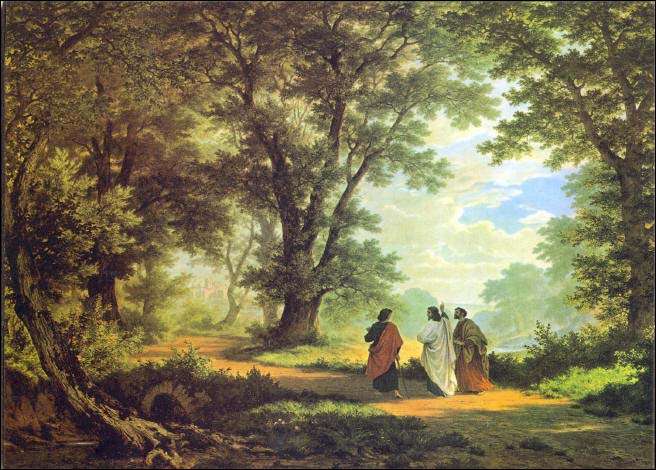Robert Zünd

Robert Zünd (May 3, 1826 – January 15, 1909) was one of the most important Swiss painters of the 19th Century.
Life
Zünd was from a middle-class family. After attending high school in Lucerne, he was taught drawing and painting in the studio of James Schwegler (1793-1866). In 1848, at the suggestion of painter Joseph Nidwaldner, Zünd moved to Geneva, where he was first taught by François Diday and later by Diday's student Alexandre Calame.
In the spring of 1851 Zünd met Rudolf Koller, with whom he shared a great friendship. In 1889 the two traveled together to the international art exhibition in Munich.
In 1852 Zünd traveled to Paris. At the Louvre, he studied the works of Dutch and French masters of the 17th Century. Zünd's first major work was The Harvest (1860), now in the Kunstmuseum in Basel. The same year, he copied works by Claude Lorrain, Ruisdael, and Paul Potter in the Gemälde Gallery in Dresden.
In 1863 Zünd settled on the outskirts of Lucerne, and after this only rarely left for any extended period of time. Between 1867 and 1877, Zünd's religious faith appears in biblical motifs in his pictures, such as in The Road to Emmaus (1877).
In 1882 Zünd completed Der Eichenwald (The Oak Forest), one of his most famous works. The image was based on an earlier study and a smaller 1859 version. Gottfried Keller, impressed by the large version in Zünd's humble art studio in Reischen, said it approached the true ideal landscape. The Oak Forest was exhibited in 1883 at the National Exhibition in Zurich. Today the picture is owned by the Kunsthaus in Zurich.
In 1906, the University of Zurich awarded Robert Zünd an honorary doctorate, and a street in Lucerne is named after him.
Artistic Style
Zünd's art is distinguished by a special closeness to nature and his highly naturalistic, richly detailed style of painting. His passions were mainly for idyllic landscapes around Lucerne. He avoided depicting modern facilities such as buildings and railways. His landscapes are generally arranged according to classical composition theory.
Selected Works
Eichwald (Oak Forest), 1859
Jäger in Eichenwaldlichtung (Hunters in oak forest clearing)
Die Ernte (The Harvest), 1859
Bei der Sempacher Schlachtkapelle (In the Battle of Sempach Chapel) 1867
Der Gang nach Emmaus (The Road to Emmaus), 1877

Bauern mit Ochsengespann (Farmers with oxen) 1900
Sonnige Au (1856), Museum Oskar Reinhard, Winterthur Autumn (1868), Kunstmuseum Bern Buchenwald (1886/1887), Kunstmuseum Luzern
References
- This article was initially translated from the German Wikipedia.
- Von Anker bis Zünd, Die Kunst im jungen Bundesstaat 1848 - 1900, Kunsthaus Zürich, 1998
| Wikimedia Commons has media related to Robert Zünd. |